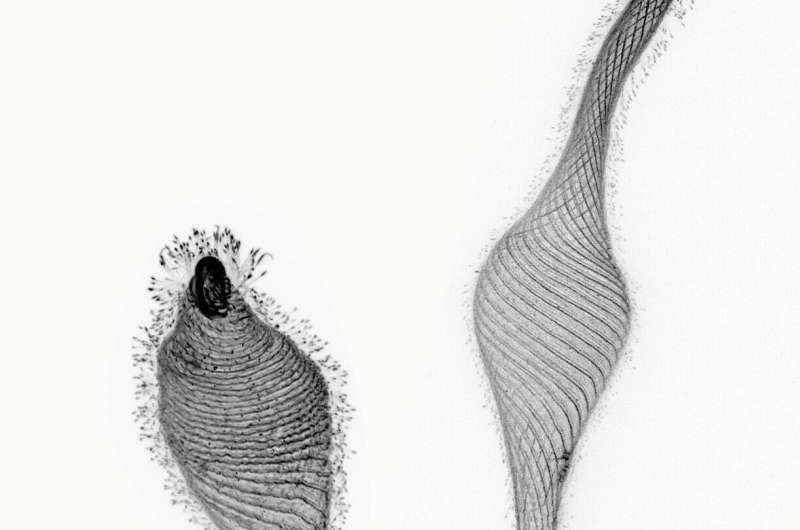Stanford researchers, led by Manu Prakash, have discovered complex behavior in a simple cell without a nervous system. The organism, Lacrymaria olor, exhibits mesmerizing behavior akin to origami.
Research Journey
- Prakash and graduate student Eliott Flaum spent seven years studying Lacrymaria olor.
- They published their findings in Science, highlighting the organism’s unique behavior.
Remarkable Behavior
- Lacrymaria olor extends a long, thin neck rapidly before retracting it.
- This behavior, without a nervous system, is akin to a form of cellular origami.
Geometric Discovery
- Prakash and Flaum uncovered a new geometric mechanism in Lacrymaria olor.
- They explained how a simple cell can produce complex morphodynamics through origami-like folding and unfolding.
Structural Basis
- The behavior is encoded in the organism’s cytoskeletal structure.
- Thin, helical microtubules form the basis of the cellular origami.
Mathematical Precision
- The folding and unfolding follow precise mathematical patterns.
- The structure’s robustness ensures consistent behavior over time.
Singular Control
- A mathematical singularity acts as a controller for the behavior.
- This is the first instance of a geometric controller described in a living cell.
Practical Applications
- The discovery opens doors for microscale “living machines.”
- These could have applications in space telescopes, surgical robots, and more.
Prakash’s Affiliations
- Prakash holds various positions at Stanford, contributing to interdisciplinary research.
Multiple Choice Questions (MCQs) with Answers:
- What did Stanford researchers discover about Lacrymaria olor?
- A) It has a nervous system.
- B) It exhibits complex behavior without a nervous system.
- C) It is a multicellular organism.
- D) It lacks any unique behavior.
- What is the term used by researchers to describe Lacrymaria olor’s behavior?
- A) Cellular gymnastics
- B) Molecular dynamics
- C) Cellular origami
- D) Microbial acrobatics
- What is the structural basis of Lacrymaria olor’s behavior?
- A) Neural circuits
- B) Cytoskeletal structure
- C) Cell membrane composition
- D) Mitochondrial organization
- What role does mathematics play in Lacrymaria olor’s behavior?
- A) It is not relevant.
- B) Mathematics determines the organism’s shape.
- C) Mathematics ensures precise folding and unfolding.
- D) Mathematics regulates the organism’s metabolism.
- What practical applications are envisioned by Manu Prakash?
- A) Living machines for household chores
- B) Microscale devices for medical surgeries
- C) Spacecraft propulsion systems
- D) Underwater exploration vehicles
